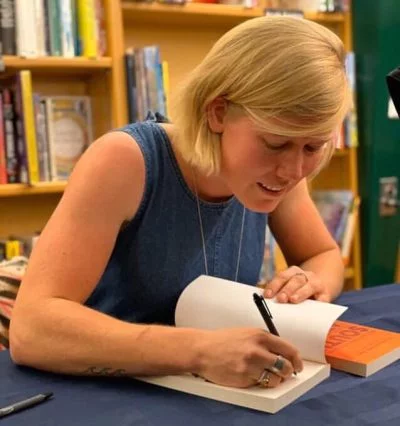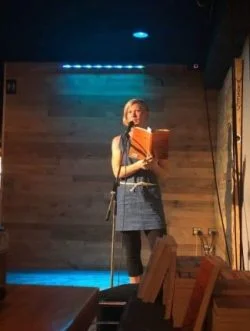#783 Skeena River to Baja California
South Away: The Pacific Coast on Two Wheels
by Meaghan Marie Hackinen
Edmonton: NeWest Press, 2019
$20.95 / 9781988732633
Reviewed by Howard Macdonald Stewart
*
 Meaghan Marie Hackinen’s South Away: The Pacific Coast on Two Wheels is about bicycling down the Pacific coast, from northern British Columbia to the south end of the Baja Peninsula. As books about road trips often are, this one is a collection of separate tales; these fall loosely into sections about the coast of BC, the coast of Washington and Oregon, the California coast north of San Francisco, California south of San Francisco, and finally Mexican California. The author’s stories from each leg talk mostly about the places and especially the people she encountered along the way. But there’s also lots of cycling lore, talk about the food prepared along the way, and some musing about life and family.
Meaghan Marie Hackinen’s South Away: The Pacific Coast on Two Wheels is about bicycling down the Pacific coast, from northern British Columbia to the south end of the Baja Peninsula. As books about road trips often are, this one is a collection of separate tales; these fall loosely into sections about the coast of BC, the coast of Washington and Oregon, the California coast north of San Francisco, California south of San Francisco, and finally Mexican California. The author’s stories from each leg talk mostly about the places and especially the people she encountered along the way. But there’s also lots of cycling lore, talk about the food prepared along the way, and some musing about life and family.
Hackinen mostly rode on her own from Terrace to southern Vancouver Island, except for a congenial riding partner on Haida Gwai’i. The journey south of the border was shared with her sister and the occasional rider they met along the way.
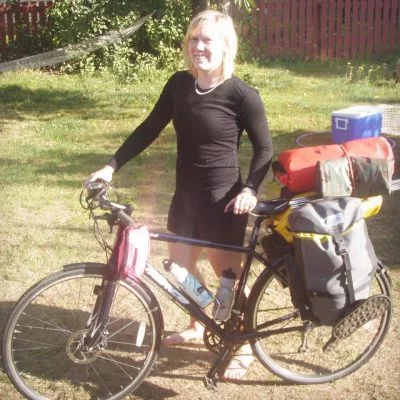
Prudent bicycle travel on roads filled with larger, fast moving vehicles usually involves riding single file, as close as you can get to the edge of the pavement. So even when she was with her sister, Hackinen, like most cyclists, had ample time for reflection. It may warm the hearts of older readers to see how much time she devoted to revisionist musings about her parents, her mother in particular. I was confused though, by mention of her grandmother and the suggestion there may be something unusual about collecting glass jars and the plastic clips off bread bags.
Setting off down the Skeena, as green as she was, took considerable courage. I don’t mean “green” as a person; though again, as with many accounts of road trips, there is a coming of age dimension to this one. The writer as young woman walks around the life she sees before her, kicking the tires and trying to guess where it may take her. But I mean green as a cyclist. This was Hackinen’s first cycling journey of any distance and she had much to master along the way, from fixing flats and replacing spokes to deciding what to carry and what to leave behind. A more cautious rider, me for example, would have experimented with some shorter rides before setting off on a journey thousands of kilometers long.
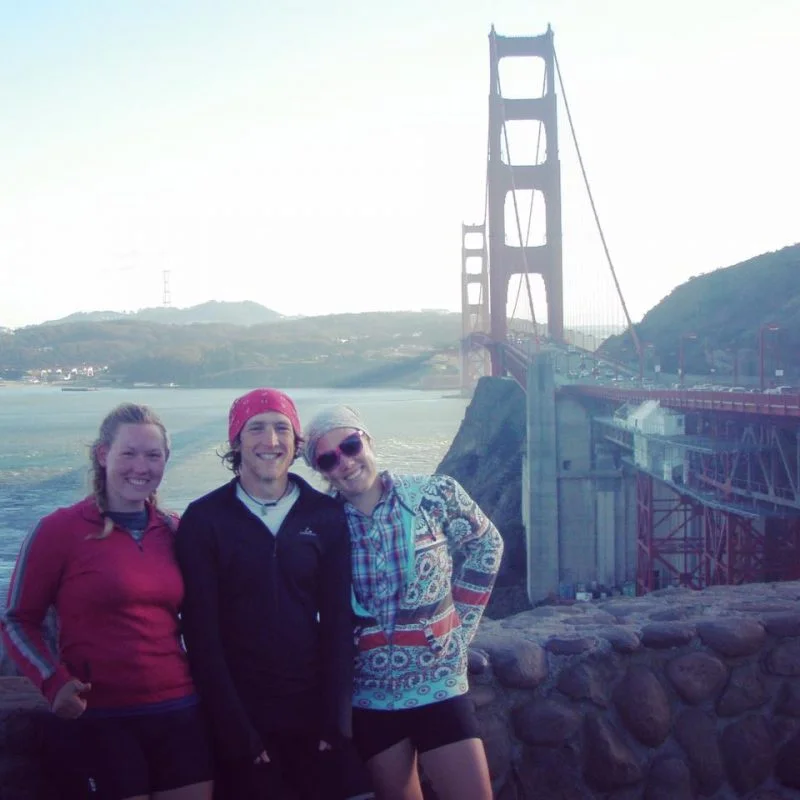
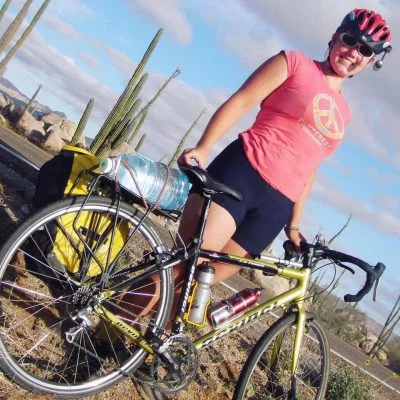
This audacity was just one of a number of things that impressed me. I was surprised too by her culinary musings, already noted; she and her sister opted to carry far more elaborate dinner fixings than I ever would have. This was just one of many ways in which her Pacific coast bicycle odyssey outshone my own.
Full disclosure requires that I admit to having ridden most of the country the Hackinen sisters did, from Terrace and Prince Rupert to the west coast of the US and Mexico. Only I did it about 40 years earlier and not always on the same roads. So I’m predisposed to like a book about travelling these parts by bicycle and inevitably found myself not just enjoying the author’s engaging stories but also comparing and contrasting her experiences with mine. She came off better than me most of the time.
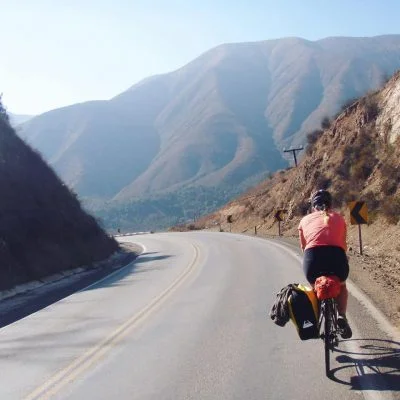
The author had the sense, for example, to ride at a more civilized pace than I did: maybe 50 or 60 miles a day, a good day’s ride on the hilly west coast roads, with time left over to do things like prepare food. One result was that Hackinen and her sister met a lot more people along the way than I did. The wonders of modern technology also allowed them to find couches to sleep on in many places where 40 years ago we’d sleep by the roadside.
Hackinen’s experience with creepy men was something I mostly missed too, partly through ignorance but mainly because the predators who run free, generation after generation, mostly target young women. Her occasional encounters, and lingering worries about the same, were frightening and anger inducing. Women readers won’t be surprised by her accounts of such threats and fears, but they’re a valuable reminder to men of what we are spared and women aren’t. Women, especially young, single women, continue to face preposterously unfair and daunting challenges when they travel the world, and can never really let down their guard.
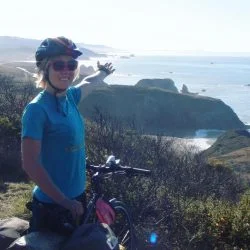
They faced other threats too, as one always does on highways full of great conglomerations of metal, glass, plastic, and rubber that fly by you at high speed, just inches away, all day long. Like the author, I almost lost it all riding south down the California coast. But unlike Hackinen, I couldn’t blame a rogue truck, just a fierce tailwind. Sometimes you can have too much of a good thing. Like the way your bum often feels at the end of a long day on the road.
But too much of a good thing does not describe South Away. From John Fraser’s account of the years he spent cycling around the world in the 1890s[1] to Kate Harris’s account of her journey along the Silk Road more than a century later,[2] the body of work about the unique joys of wandering the world on two wheels just keeps getting better and Meaghan Marie Hackinen’s South Away is a welcome addition to it.
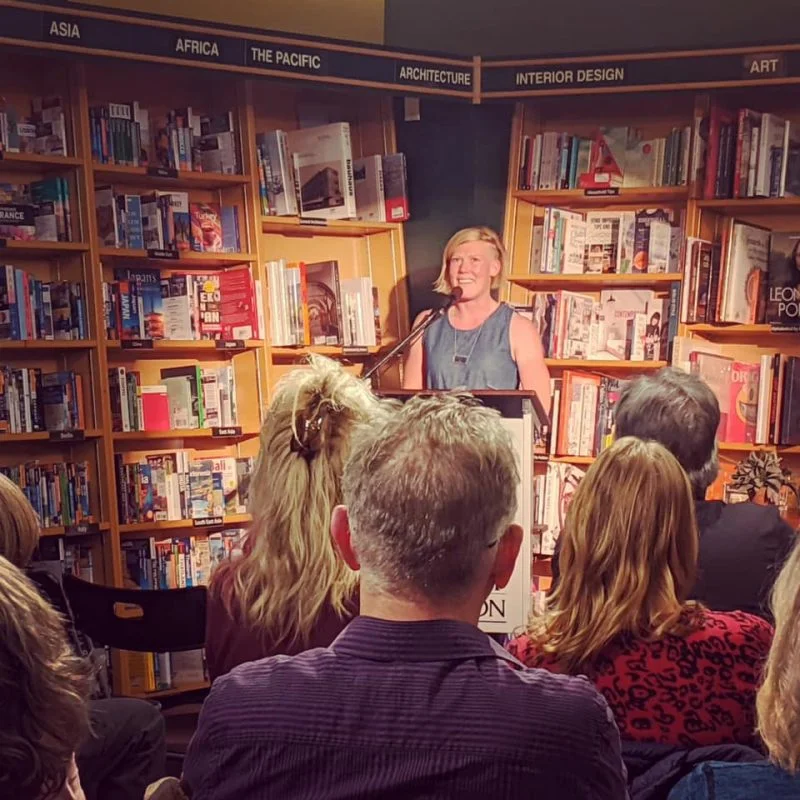
*
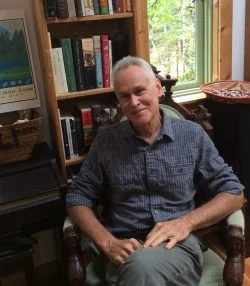
Howard Macdonald Stewart is author of Views of the Salish Sea: One Hundred and Fifty Years of Change around the Strait of Georgia (Harbour Publishing, 2017). An historical geographer and semi-retired international consultant whose work has taken him to more than seventy countries since the 1970s, Howard has reviewed books for The Ormsby Review and BC Studies. His account of a bicycle trip around North America, “The year of the bicycle, 1973: North American backroads at the end of the Indochina War,” was published recently in The Ormsby Review (no. 788, April 2, 2020), and his story of a bicycle trip down the Danube in River later in 1973 with the war hero and debonair cyclist Cornelius Burke, “Bumbling down the Danube,” was also published here (The Ormsby Review no. 21, September-October 2016). Howard contributed a popular Remembrance Day piece, “Why the Red Poppies Matter,” in The Ormsby Review no. 420, November 11, 2018. He is now writing an insider’s view of his four decades on the road, notionally titled Around the World on Someone Else’s Dime: Confessions of an International Worker. Howard Stewart has lived on Denman Island, off and on, for more than thirty years.
*
The Ormsby Review. More Books. More Reviews. More Often.
Publisher and Editor: Richard Mackie
The Ormsby Review is a journal service for in-depth coverage of B.C. books and authors. The Advisory Board consists of Jean Barman, Robin Fisher, Cole Harris, Wade Davis, Hugh Johnston, Patricia Roy, David Stouck, and Graeme Wynn. Scholarly Patron: SFU Graduate Liberal Studies. Honorary Patron: Yosef Wosk. Provincial Government Patron since September 2018: Creative BC
“Only connect.” – E.M. Forster
Endnotes:
[1] John Foster Fraser, Round the World on a Wheel (London: Methuen, 1899).
[2] Kate Harris, Lands of Lost Borders: Out of Bounds on the Silk Road (London: Vintage, 2019)
